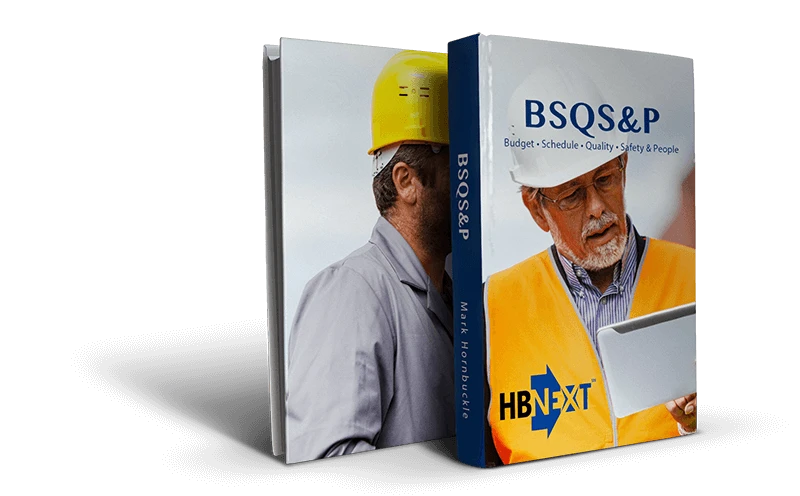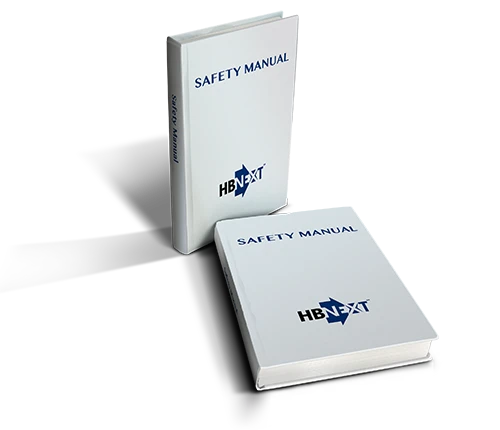Safety manual services
- Complimentary review of your current safety manual
- Custom Safety Manuals – tailored to your business
- Pre-qualification compliant manuals
- Safety manual implementation with your team
- Total safety program review
- Safety manual orientations
- Site-specific safety management plan
- Consulting for environmental safety plans
Request Safety Manual Services
Safety Manual Process

Step 1 – Client purchases safety manual service from HB NEXT
Step 2 – An HB NEXT Consultant will schedule a conference call to get a full description of your business
Step 3 – HB NEXT creates an initial draft for your review and feedback
Step 4 – Client shares feedback with HB NEXT
Step 5 – HB NEXT creates the final draft of your new safety manual
Step 6 – Client approves and receives an electronic PDF copy
Safety Manual Implementation
HB NEXT is a partner who not only writes your next safety manual but trains your staff for your first safety manual implementation. After years of training company employees, HB NEXT knows how to engage employees, ensuring they connect your policy with their own personal safety and professional safety. This process brings your staff from the “check a box and get it done” to “buying into the company’s safety policy and procedures,” which ultimately saves lives and reduces injuries and workers’ compensation costs. HB NEXT also offers a digital form of safety implementation for companies that continue to hire additional people throughout the year.
HB NEXT: Site-Specific Safety Manuals for Optimal Construction Safety
HB NEXT is your dependable safety partner. HB NEXT knows the value of starting with a solid site-specific safety plan for construction. Don’t leave your project weak from the start. Contact us today and start taking advantage of our expertise to keep your construction site safe. Don’t forget to book your Safety Orientation so your crews can begin their project.

OSHA Compliant Safety Manual

An OSHA Compliant Safety Manual comes with
- Company-Specific Section which Includes:
- Mission Statement
- Responsibilities
- Accident Investigation Procedures
- Recordkeeping
- Training Requirements
- Job-Site Rules (Both OSHA Regs for 1926 and any Company Policies that may go “Above and Beyond”)
- Shop / Yard / Warehouse / Office Rules (Both OSHA Regs for 1910 and any Company Policies that may go “Above and Beyond”)
- Programs & Policies
- Company Forms
- SDS Storage
- Purchased Printed Copies Upon Request
Pre-Qualification Compliant Safety Manuals
A Pre-Qualification Compliant Safety Manual comes with:
- All Programs and Policies That a Company Needs To Be Compliant With Pre-Qualification Programs Such as ISNetworld, Avetta, etc.
- Company-Specific Section Which Includes:
- Mission Statement
- Responsibilities
- Accident Investigation Procedures
- Recordkeeping
- Training Requirements
- Job-Site Rules (Both OSHA Regs for 1926 and any Company Policies that may go “Above and Beyond”)
- Shop / Yard / Warehouse / Office Rules (Both OSHA Regs for 1910 and any Company Policies that may go “Above and Beyond”)
- Programs & Policies
- Company Forms
- SDS Storage
- Purchased Printed Copies Upon Request


